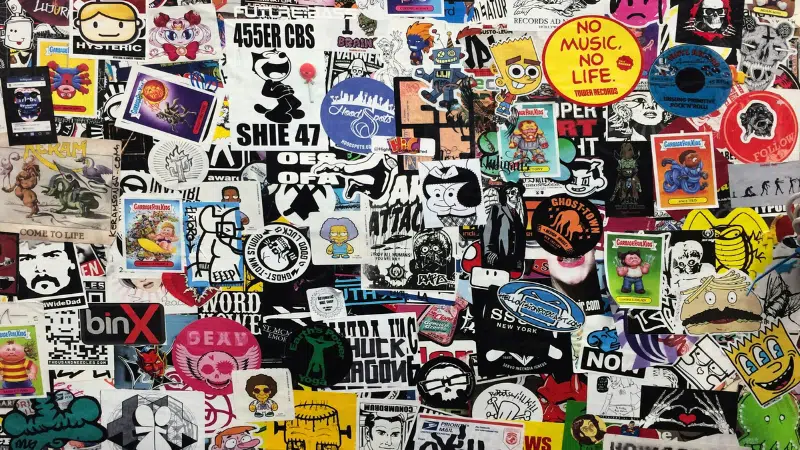Your artist name isn’t just something that sounds cool; it’s your brand. It’s how fans find you, how promoters book you, and how your reputation spreads. So when someone else starts using a name that’s just like yours (or close enough to confuse people), things can definitely get messy. But that’s where trademarking comes in! A trademark is what helps you protect your name (and your brand) while you work hard to monetize your music.
The good news? You don’t need a massive budget to get started, just a little patience and the right info. To help you out, here’s a step-by-step guide to help you trademark your artist name the right way…
Step-By-Step Guide: Everything You Need To Know About Trademarking Your Artist Name in the US
Step 1: Make Sure Your Name Is Trademark-Ready
Before you can trademark your name, you need to make sure it’s actually available. If another artist is already using the same name, or even one that looks or sounds very similar, your application could be denied, or you might face a dispute later on.
When choosing your exact name, be aware of these things:
- Use your full stage name as it appears publicly. Don’t abbreviate or alter it unless that’s how you consistently brand yourself.
- Make sure it’s spelled exactly the way it should be.
- Avoid generic terms that cannot be protected (like “The Band” or “Music Maker”).
Next, it’s time to do a thorough search to determine if the name is already in use. A good place to start is to begin by searching all the Digital Service Providers (“DSPs”) you will be distributing your music to. (aka Spotify, Apple Music, Instagram, TikTok, Google, etc.) If you find another artist, brand, or company with your name, check to see how active they are. If they’ve released music or currently perform under that name, you may not be able to use that name.
If you do not see your artist name in use anywhere, the next step is to check the relevant registries of the territories that you plan to distribute your music to. If you are in the United States, this means checking with the U.S. Patent and Trademark Office (USPTO) website to see if anyone’s already trademarked the name within this territory.
NOTE: It is very important that if you plan to distribute worldwide, make sure to also look into the relevant registries of the additional territories you are distributing to.
If you don’t see another party or entity using your name, you are ready to move on to step 2!
Step 2: How To Provide Proof of Use
If you already have songs out, merch on sale, and gigs posted, you need to include proof of how your name is being used. (USPTO calls this “current use”) Some examples of proof include things like:
- Screenshot of your Spotify or Apple Music artist page
- Photo of merch with your name on it
- Poster or social media post from a live show
🤔 Not live yet? That’s fine, you can still file to reserve your name. (USPTO calls this “intent to use”) You’ll just submit proof later once your music, merch, or performances are live.
Step 3: How To File Your Application
Now it’s time to put it all together. If you are in the U.S., you can go to the USPTO Trademark Center to start your application. Once you create your account and begin your application, you will be asked to choose whether your filing is based on current use or intent to use.
Once you have selected the correct filing basis, you’ll choose your trademark class next. Your trademark class is how the USPTO will organize your filing, based on the industry your trademark will be used. That said, your classes should match your use of the soon-to-be trademark (referred to in the application process as classes).
Most indie musicians fall into the following categories/classes:
- Class 9: Informational software, including downloadable music recordings,
- Class 25: Clothing, including merchandise and clothing
- Class 35: Advertising and business, including personal management services for musical performers
- Class 41: Education and Entertainment, which includes live performances and music production services
Next, it’s time to pay the filing fee. Typically, this runs around $250-$350 per class (depending on which form you choose). Then, all that’s left is to review your work to make sure everything is correct and submit it. Once submitted, you should get a serial number to track your application’s status.
——
Want to learn more? 📚🧠 Check out these helpful resources…
How to Use Crowdfunding to Launch Your Next Project
Why Copyright Registration Matters More Than Ever in the Age of AI
How to Track Royalties and Payouts as an Independent Artist
Easy Song Masterclass Recap: 8 Tips Every Artist Should Know About Song Licensing
——
Step 4: The Review Process
After you submit your trademark application, it will take time to be reviewed and approved by the USPTO. Here’s what to expect:
- USPTO review: An examining attorney will check your application to make sure it meets the rules. This usually takes a few months.
- Office Actions: If they find an issue, they’ll send you a letter called an “Office Action.” Don’t panic! It’s just a request for clarification or a fix. You’ll have a chance to respond and explain your case.
- Opposition period: Once the USPTO approves your application, it’s published publicly for 30 days. Other parties can object if they think your name conflicts with theirs.
- Approval & registration: If there are no problems or objections, your trademark application will be approved, and your trademark will officially be registered in the United States. You will also receive a certificate of registration upon completion.
Congratulations! Your name is now legally protected.
💡 PRO TIP: Keep checking your USPTO account regularly so you don’t miss any notifications, and respond as quickly as possible if you get an Office Action! Any delays can slow down the process.
Step 5: Keeping Your Trademark Alive
Getting your trademark is just the beginning. To keep it valid, you must keep using the trademark in commerce. You’ll also need to renew with the USPTO at year 5-6 and every 10 years after that, so keep your contact info up to date so they can reach you if needed.
Now, you can keep an eye out for anyone trying to use your name. Now that it’s trademarked, you have the legal power to step in if necessary. 👊
To wrap things up…
I know this may seem like a lot, but it really is worth it. Think of it as building a solid foundation for your career: once your name is registered, you have a strong foundation to use that name throughout your career, and you can put more energy into what you actually care about, like making great music and playing shows to the fans who love you the most. From here, just keep using your name consistently across all your platforms, and mark your calendar for renewal deadlines so your trademark stays active.
The sooner you handle it, the sooner you won’t have to think about it again for at least 10 years, giving you peace of mind in an already crazy world.
Good luck!
—
The information provided in this article is for educational and general informational purposes only and does not constitute legal advice. Trademark and intellectual property matters can be complex and highly fact-specific, and outcomes often depend on the unique details of each case. We strongly recommend that you consult with a qualified attorney experienced in trademark or intellectual property law before making any legal or business decisions related to your brand or filings.



